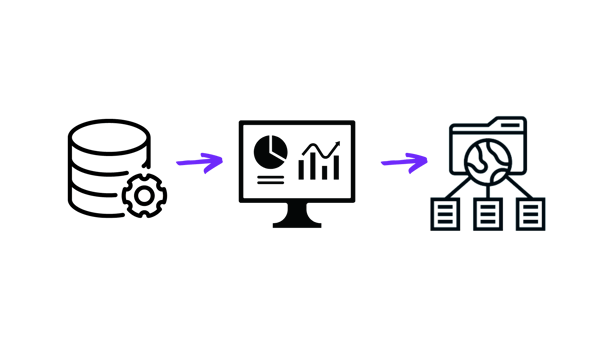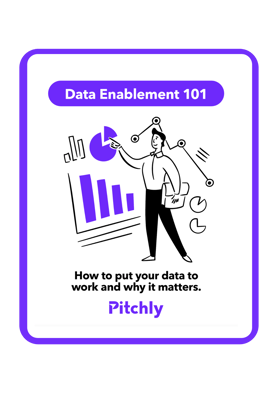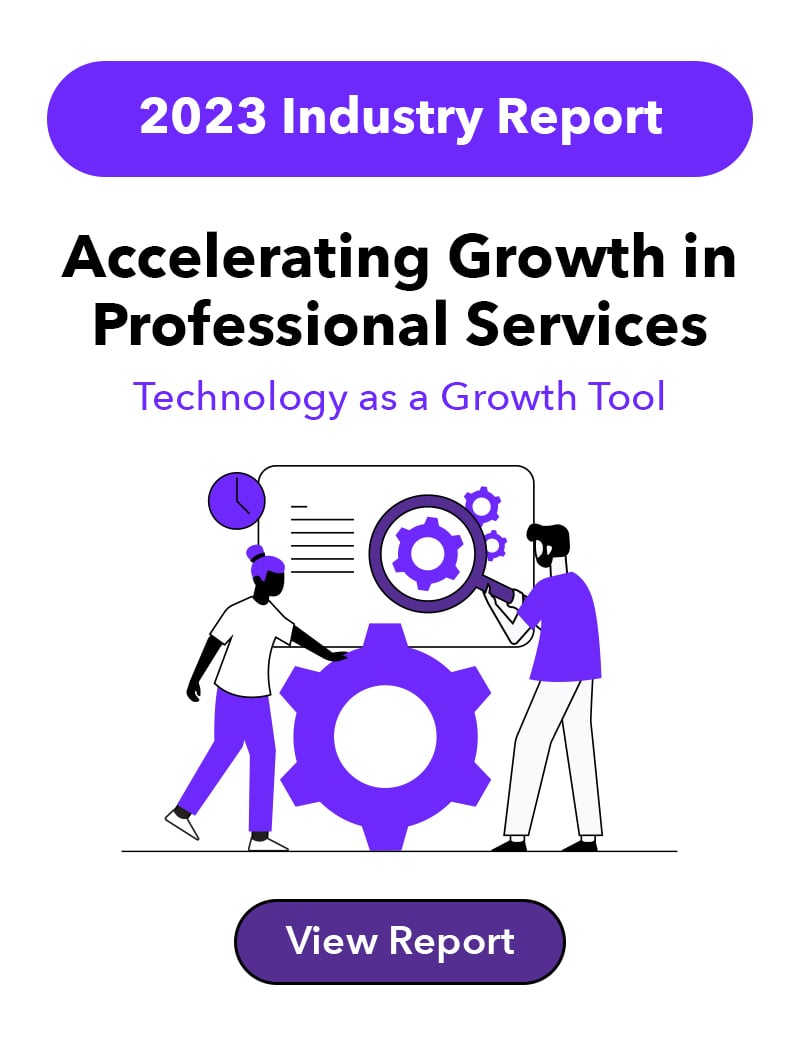Organizations both large and small are focused on data – including its quality and how to use it. You’ll hear business leaders proclaim that “data is power” and is the “ultimate tool for success.”
As a result, several different disciplines related to data have been introduced. People talk about data enablement vs. management vs. governance, but the lines between them all can get blurred.
With all these different data buzzwords, it can be hard to know what exactly the distinction is between them. So let’s go over what exactly each of these entails, and the key differences between them.
Data Enablement vs. Management vs. Governance
Enablement, management and governance are all terms that are mentioned around when discussing data. And while all of them ultimately involve your data and how to make it work for your organization, there are several key differences among the three.
To begin, data management is the overall practice of storing and making use of your data. To put it plainly, anything to do with data falls under the umbrella of data management, including data enablement and governance.
Now, both data enablement and governance involve access to data, but they are very different in practice and have specific, distinct outcomes.
Data governance is about making decisions related to compliance and access, as well as the technical considerations. Data enablement sometimes is seen as an extension of governance that brings in a more strategic perspective.
Enablement ensures that everyone who should have access to data does in an easy, timely, and efficient manner, and that the culture of data is created. In short, data enablement is a strategic discipline that can assist with the execution of data governance policies.

More About Data Management
Data management is the process of ingesting, storing, organizing and maintaining an organization’s data. Every organization depends on its data to make important business decisions. That's why organizations prioritize finding effective data management software.
Data helps companies decide if they should grow, scale back or stay the course. And anything that helps an organization run applications, provides analytical information and drives operational decision-making falls under data management.
Data management is important because it gives everyone in the organization access to quality data that guides essential business decisions. A good data management system helps drive high-quality data through data governance and helps turn that data into actionable items, i.e., data enablement.
Data Governance
As mentioned above, part of data management is data governance, or the process of managing the availability, usability, integrity and security of data. Data governance processes ensure your data is consistent and trustworthy, or in other words, high-quality.
Data governance is a key part of compliance, and that’s why it’s important to establish infrastructure, policies and procedures that safeguard your data. Data must be handled properly and responsibly by the right people in your organization.
Data Enablement
In short, data enablement is all about making the most out of the data you have. This involves making it actionable, accessible and flexible.
To establish a benchmark, let’s review a couple of definitions:
- “Data enablement is the practice of empowering business entities with the right tools and technologies to drive maximum leverage from data to achieve business objectives.” iSmile Technologies
- “Data enablement is the practice of empowering individuals in a business with the support and tools they need to responsibly leverage trusted data to achieve real business outcomes.” Dataversity
The common threads between these definitions are: that you’re connecting people to the data they need and that this has a direct impact on your business outcomes. These are the core tenets of this discipline.
When your data is enabled, it is structured in a way that makes it easy for people to access the data they need, across teams, departments and business units.
This structure can come from a variety of rules and policies based on internal needs. The process of structuring your data to enable it involves consistently centralizing, validating, and classifying your data.
One of the major requirements underlying data enablement is real-time updates when changes in your data have occurred. This is where the need for automation often surfaces. Keeping your data catalog up-to-date ensures that self-service data access is always available and accurate. Not only will employees have access to everything they need, but they can be confident that they can pull the freshest data at all times.
Why Data Enablement Is an Important Addition
Without data enablement strategies in place, organizations are at risk of compromising their security, longevity, ability to scale, and overall competitiveness.
While Data Management and Data Governance are crucial for an organization, without the Enablement component, this data that organizations put so many resources into could go to waste. Enabling your data ensures that you’re making the most of every single piece of data at your disposal.
Where to Start

If you’re looking to invest in Data Enablement, Pitchly is the tool for you. With our easy-to-use platform, you can design, generate, and distribute your content all from one place. No matter how many disparate data sources you have now, Pitchly can be used to bring them together.
And Pitchly does it in real-time. That means that you can always be confident that you’re getting the most accurate, up-to-date data pulled from all of the connected sources.
Here’s a look at some of the key features:
- Data Workspaces. Centralize and connect your data in single or multiple workspaces, empowering your team to access and search all relevant data, no matter the originating source.
- Elements. Pitchly Elements is our content creation app, giving your team the tools to enable your data, automatically generating pitch content that updates itself as the data changes.
- AI Assist. Enhance your data and improve your productivity workflows with the power of our new Pitchly AI Assist.
- Forms. With Pitchly Forms, you can streamline your data collection processes, helping you gather and vet data from those closest to the work. No emails or instant messages are necessary
Schedule a demo today to see how Pitchly can kickstart your data enablement strategy. Or download our new eBook, Data Enablement 101 to get the full picture of what data enablement is, the best strategies, and what to look for in enablement tools. 
 Apr 26, 2022
Apr 26, 2022





